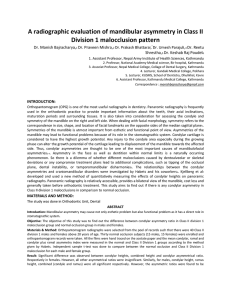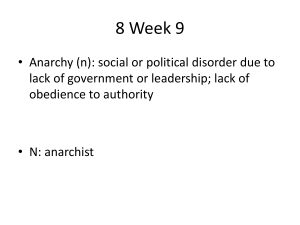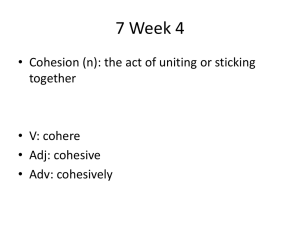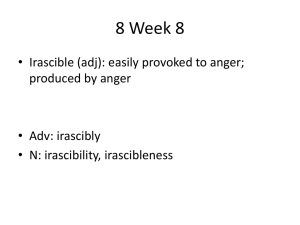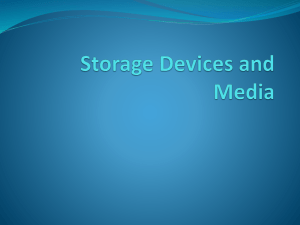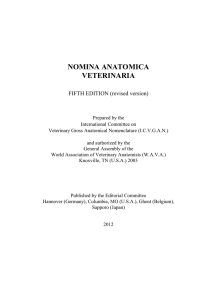Mandibular Fixation: Angle, Ramus, and Condylar Neck Fractures
advertisement
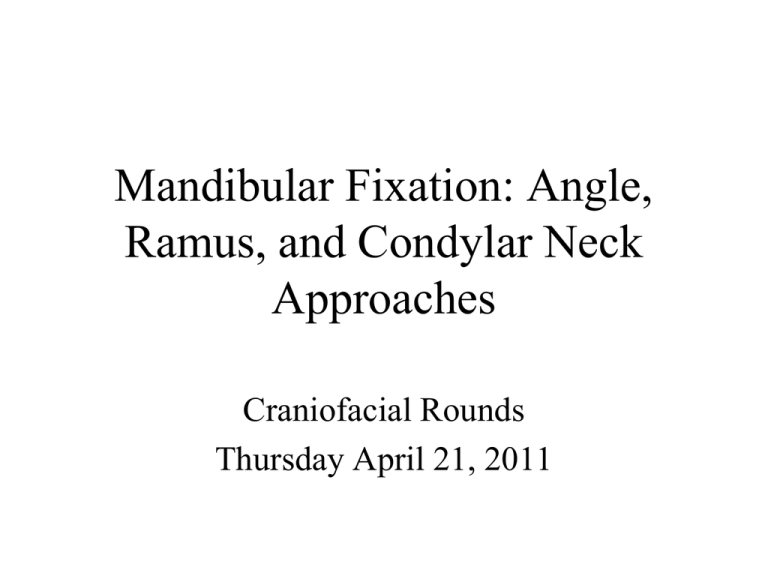
Mandibular Fixation: Angle, Ramus, and Condylar Neck Approaches Craniofacial Rounds Thursday April 21, 2011 Anatomic considerations • Nerve: inferior alveolar n., lingual n., facial n. • Vasculature: inferior alveolar a/v, facial a/v, • Muscle: buccinator, masseter, temporalis, medial/lateral pterygoid • Fat: buccal fat pad • Gland: parotid, • Bone: temporal crest, mylohyoid line, oblique line 3rd molar Ramus and Angle • Indications for ORIF – All displaced fractures – Non-compliant pt for MMF • Approaches – Intra-oral vs. external • Techniques – Load sharing vs. load bearing Ramus and Angle • Approaches – Intra-oral • Intra-oral + transbuccal technique – External • Submandibular • Retromandibular • Rhytidectomy Intra-oral approaches - For simple angle # • Vestibular incision – 5 mm from gingiva • Access – Extend up the external oblique ridge – Protect buccal sensory nerve in region of coronoid notch • Adv: Simple access to fracture • Disadv: Limited exposure for recon plate placement, injury to n, Intra-oral approaches - For complex angle # • Add transbuccal trocar • Adv: manipulation at 90 degree angle possible • Disadv: scar, limited movement, risk injury to mental nerve External Approaches Submandibular – Skin incision • Parallel to border, existing crease • 2-3 cm below inferior border – Access • • • • Platysmal dissection Avoid injury to marginal mandibular nerve Ligate facial vessels Incise pterygomasseteric sling at inferior border to expose fracture – Adv: Optimal visualization for complex fractures, control of lingual cortex – Disadv: External scar, risk of injury to marginal mandibular nerve External Approaches • Retromandibular • Adv: Good exposure of posterior ramus, condylar neck/head • Disadv: Risk injury to facial n, parotid gland, hypertrophic scarring, increased operating room time • Transparotid – Adv: close proximity to the site of injury • Retroparotid – Adv: no parotid dissection • Rhytidectomy External Approaches • Transparotid • Skin incision – Parallel to the posterior ramus • Access – Identify SMAS and incise – Blunt dissection in the direction of facial n branches – Incise pterygomasseteric fascia, subperiosteal dissection – Layered closure, parotid capsule closure • Adv: Good exposure of ramus, condylar neck • Disadv: Scar, risk injury to facial n, salivary fistula External Approaches • Retroparotid • Skin incision – Extended posterior to ramus • Access – Identify SMAS and incise – Blunt dissection in the direction of facial n branches – Incise pterygomasseteric fascia, subperiosteal dissection – Layered closure, parotid capsule closure • Adv: Good exposure of ramus, condylar neck, avoids parotid dissection • Disadv: Scar, risk injury to facial n, , retromandibular vein, parotid External Approaches • Rhytidectomy • Skin incision – More cosmetically acceptable • Access – Similar to trans/retroparotid approach • Adv: Good exposure of ramus, condylar neck, more cosmetically acceptable location • Disadv: Scar, risk injury to facial n, great auricular n , retromandibular vein, parotid Ramus and Angle • Techniques – Load sharing • Wire – Minimize rotation with MMF • Single monocortical, noncompression plate: – Simple fractures, isolated, other mandible fractures stabilized by rigid fixation • Two miniplates – Increased stability (presence of other fractures not amenable to rigid fixation, bilat angle, LeFort) – Load bearing • Reconstruction plate – Atrophic mandible, non-compliant patient, infected fracture, osteotomy Ramus andAngle Fixation • Non-rigid fixation – Monocortical, non-compression plates • Popularized by Champy et al. 1978 • Ellis and Lee 1996 – 81 patients, non-comminuted angle # – 16% (n=13) complication rate • Adv: simple access, intraoral incision • Disadv: non-rigid fixation, does not control torsional/bending forces, gap formation at inferior border (reversal of tension/compression zones) – Two miniplates – to control torsion and tension • Addition of a lower border plate • Monocortical or bicortical • Locking or non-locking Ramus and Angle Fixation Ramus and Angle Fixation Rigid Fixation – 2.0 to 2.4 mm mandibular reconstruction plates • Minimum 3 holes each fragment Condyle Neck, Head • Indications for ORIF – Displaced fractures – Enough room to allow fixation of the superior segment Condylar head/neck • Preauricular – Skin incision • Preauricular skin crease – Access • • • • ID superficial temporal fascia *frontal branch of VII is superficial* Protect sup. Temporal vessels Incise fascia, deep subperiosteal dissection to expose lateral zygomatic arch, TMJ capsule, condylar neck – Adv: Good exposure of high condylar neck and TMJ – Disadv: Limited exposure to low condylar neck, risk injury to facial n, superficial temporal vessels



